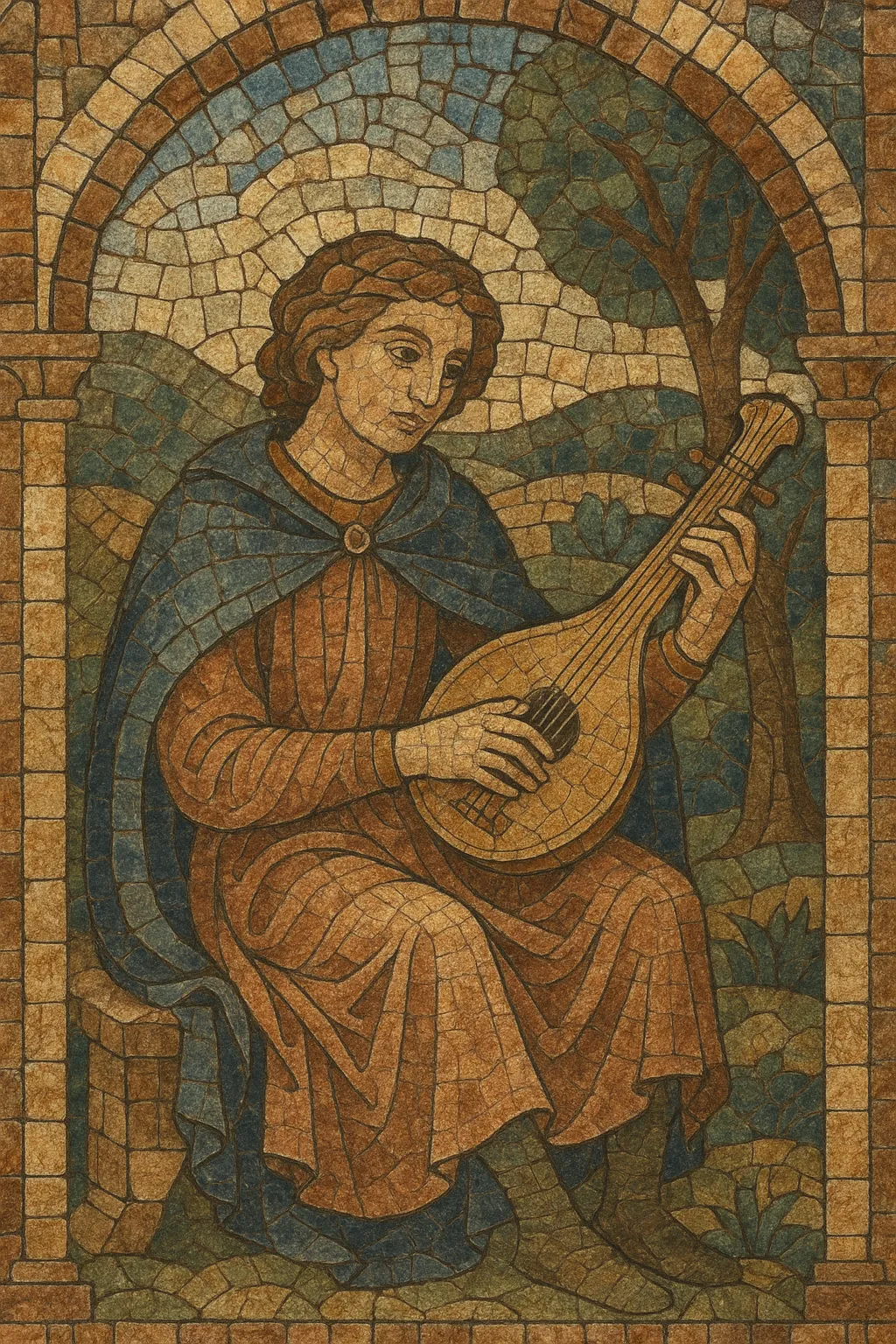Medieval lyric poetry refers to the monophonic, poet-composer song traditions that flourished in medieval Europe, especially from the 12th to the 14th centuries. It centers on refined, metrically crafted texts set to memorable modal melodies and performed by court poets, minstrels, or itinerant singer-poets.
The genre is best known through the Occitan troubadours and northern French trouvères, but related traditions also thrived among the German Minnesänger and the Galician‑Portuguese cantigueiros. Typical themes include courtly love (fin'amor), longing and absence, moral or political commentary (sirventes), crusade songs, and nature imagery, articulated through strict stanzaic forms, elaborate rhyme schemes, and refrains.
Performance was usually solo voice accompanied by medieval instruments (vielle, harp, lute, psaltery, flutes), with a predominantly syllabic text setting, modal pitch organization (e.g., Dorian, Mixolydian), and strophic repetition that highlighted poetic craft.
Medieval lyric poetry emerged in the 1100s within the courts of Occitania (in present‑day southern France). Troubadours, often both poets and composers, crafted refined strophic songs (e.g., canso) on the ideals of fin'amor, an ethos of courtly love emphasizing restraint, service, and inner virtue. Musical language drew on ecclesiastical modal practice, while textual craft followed strict syllabic counts and interlocking rhyme schemes.
The model spread north to the trouvères in Old French, east to the German Minnesänger (cultivating the Minnesang), and west to the Galician‑Portuguese sphere (cantigas de amor/de amigo). Each region adapted core poetic-musical techniques to local language and taste, developing distinct subgenres such as the alba (dawn song), pastorela (encounter with a shepherdess), tenso (poetic debate), and sirventes (moral/political satire).
Songs were preserved in chansonniers and cantigueiro manuscripts that record both texts and (often) monophonic melodies in neumatic notation. Performance was typically a solo singer, sometimes self-accompanied or supported by a small ensemble using harp, vielle, psaltery, flute, and later lute; practices likely included drones, heterophonic doubling, and flexible rhythm aligned to poetic accent.
By the 13th–14th centuries, evolving polyphonic styles (e.g., Ars nova) and courtly song genres redirected elite taste, yet the poetic-musical lineage fed directly into later French chanson, Italian madrigal, German Lied, and the broader European art‑song tradition. Medieval lyric poetry’s tightly integrated text-music design, stanza-refrain architecture, and expressive love poetics became foundational models for subsequent secular vocal music.


